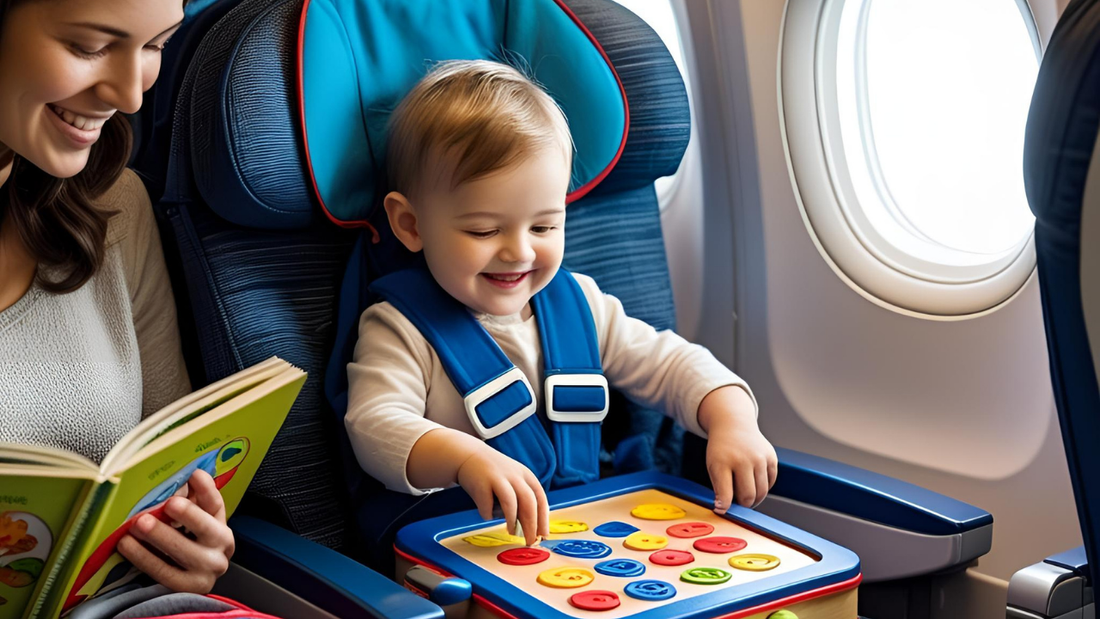
How to Engage 2-3 Year Old Toddlers During Flights: A Fresh Approach to In-Flight Fun
LiLLBUDFlying with a toddler who is between the ages of 2 to 3 requires more than just handling tantrums; it also requires transforming travel into a little adventure. Toddlers at this age are inherently inquisitive, energetic, and keen to participate in everything that goes on around them. The difficulty? You're in a small area with restricted mobility and new regulations (like seatbelts).
But don’t worry – engaging your toddler in the air can actually be fun and meaningful when you tap into their stage of development. Here's how to maintain calm, playful, and connection-focused from takeoff to landing.
Start With a Pre-Flight Ritual
The journey begins before you board. Toddlers love routines, and having a special “travel day ritual” helps them know what to expect. Try this:
- Allow them to help pack their backpack with a few familiar toys
- Read a travel-themed board book the night before
- Make a “travel playlist” of their favorite and well known songs
-
Reward them with a sticker or a “flight badge” for being a brave flyer
When your toddler feels involved and prepared, they’re more likely to remain engaged and less likely to resist change.
Use Rhythmic and Repetitive Play
Toddlers enjoy rhythm and music because it calms their nerves and provides them with a routine. Here are flight-friendly rhythmic games:
- Hand tapping games (“Pat-a-cake” or make your own rhythm)
- Call-and-response songs like “If You’re Happy and You Know It”
- Sing with gestures to keep their hands busy and minds focused
-
Clap-along storybooks or finger-play rhymes
Rhythm helps toddlers to self-regulate, especially in unfamiliar or overstimulating environments like airports and airplanes.
Introduce Slow, Sensory-Based Activities
Sensory play doesn’t have to mean messy play. On a plane, focus on tactile, visual, and auditory input your toddler can enjoy in their seat. Ideas include:
- A button frame or zip board to use the fingers
- Mini sensory bottles with glitter and beads for calm visuals
- Velcro shapes or felt play mats with attachable pieces
- Soft texture books or DIY fabric swatches in a small pouch
-
A calming scented wipe or essential oil patch for comfort
Bonus: Sensory toys are grounding, which is super helpful during moments of turbulence or anxiety.
Try Social and Imitation Games
At this age, toddlers are obsessed with imitation and role-play. You can tap into that with quick, low-effort games like:
-
“Copy Me” facial expressions
-
Pretend you're the pilot or flight crew giving safety instructions
-
“Guess What I’m Doing?” with charades or gestures
-
Play “store” with snacks or toy menus on the tray table
Not only are these games engaging—they also build empathy, creativity, and connection between you and your toddler.
Use a Visual Time Routine
Toddlers don’t understand how long a flight is—but they do understand order. Instead of saying “Only 2 hours left,” say: “First we’ll color, then we’ll eat, then nap, then land!”
You can even use printable visual cards or draw them on paper:
(Play – Eat – Rest – Land)
Predictability makes toddlers feel safe and secure in unfamiliar settings, which reduces whining and resistance.
Create Tiny Play “Zones” on the Tray Table
Make your tray table a rotating play station! Use small cloths or paper sections to divide it into:
-
A creative zone (coloring or stickers)
-
A story zone (mini book or puppet)
-
A build zone (magnetic tiles or soft blocks)
Rotating “zones” every 20–30 minutes helps avoid boredom while giving your toddler clear, structured activities—just like mini centers at preschool.
Use Language-Rich Play to Boost Focus
Since language is developing rapidly at this age, introduce games that challenge their speaking and listening skills:
- “What’s in the Bag?” Mystery object guessing
- “Tell Me a Story” with open-ended prompts
- Counting passengers or naming objects in the plane
-
Talking about feelings using emojis or face cards
In addition to keeping them interested, this kind of play promotes early literacy and emotional growth.
Toddlers Love Adventure – Give Them One
The goal of flying with a child ages two to three is to include them in the experience rather than merely "keep them busy." When you approach the flight as an opportunity for learning and connection, your toddler will rise to the moment (with a little wiggling and snack bribery along the way) if you view the flight as a chance for education and bonding.
So take a deep breath, gather your playthings, and watch your toddler learn to love.

